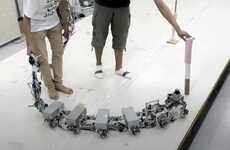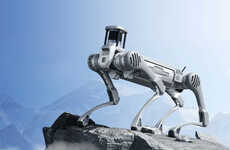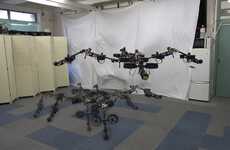
Leaping Rescue Robots
Trend Huntress — May 24, 2008 — Tech
References: vnunet
A tiny little grasshopper inspired robot can jump 27 times its own body length; that's ten times farther than any other jumping robot. Scientists hope the little leaper will be able to aid in chemical spills, pollution, and search and rescue missions on terrain where wheeled or legged robots can't go. The robot, which weights a mere 7 grams, is battery operated. It is expected that they'll soon be fitted with solar cells to keep them hopping.
Jumping performance can be optimized for force and takeoff angle.
Jumping performance can be optimized for force and takeoff angle.
Trend Themes
1. Jumping Robots - Developing robots with optimized jumping performance for various industries could revolutionize search and rescue missions, pollution control and other applications.
2. Solar-powered Robotics - Using solar energy to power robots could expand their capabilities and make them a more sustainable solution for various industries.
3. Miniature Robotics - The development of smaller robots with powerful capabilities opens up new possibilities for search and rescue missions, chemical spills, and pollution control.
Industry Implications
1. Search and Rescue - Jumping robots could be used in search and rescue missions in areas where ground vehicles can't access or fly, and potentially reduce risks and save lives.
2. Pollution Control - Robots with optimized jumping performance could assist in identifying, mapping, and cleaning up pollutants in hazardous and hard-to-reach areas.
3. Chemical Spills - Miniature solar-powered robots could help mitigate the effects of chemical spills without putting human responders in danger by responding quicker and better controlling the situation.
1.5
Score
Popularity
Activity
Freshness























